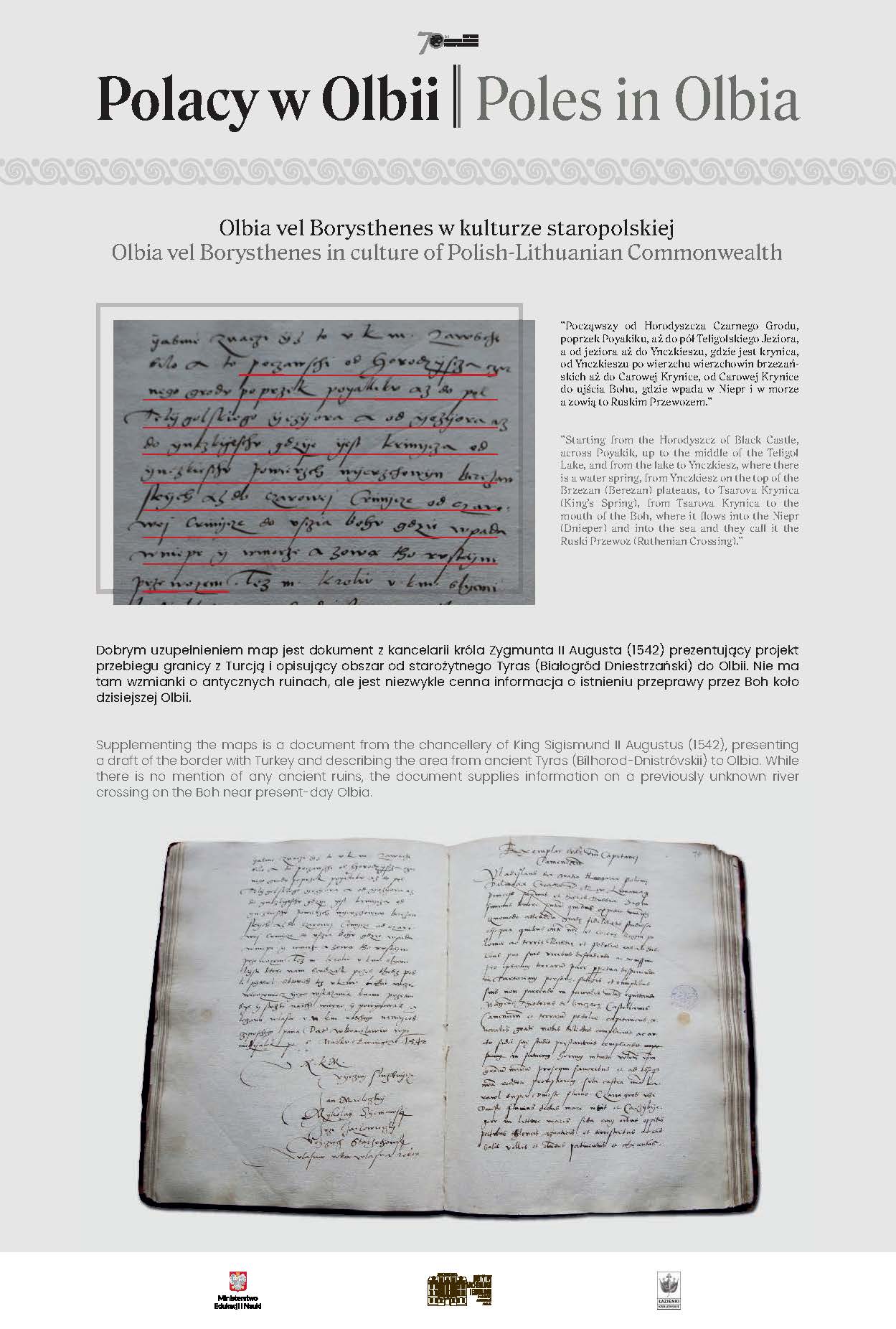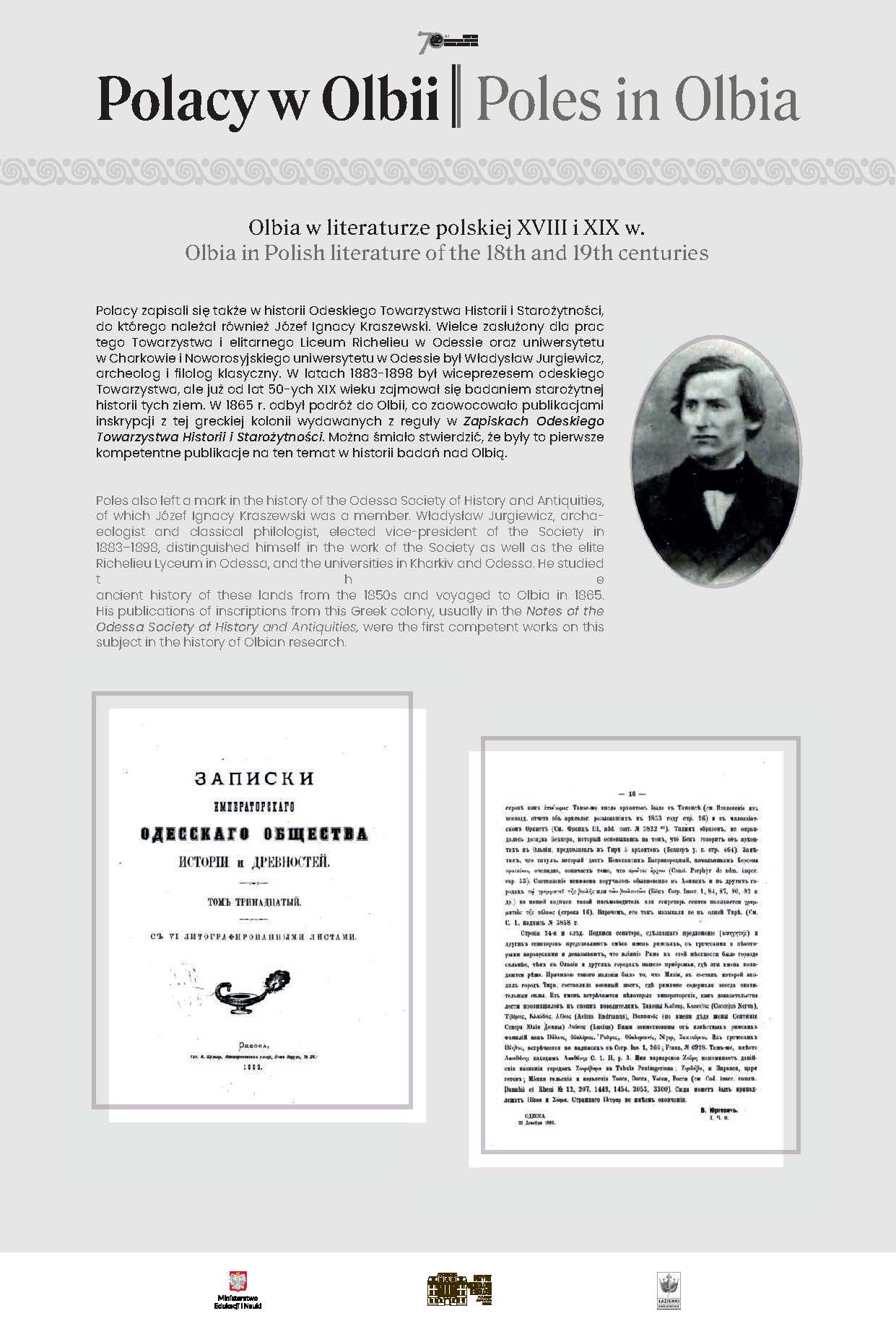The exhibition is the result of the last few years of Dr. Alfred Twardecki's work on the history of research at the archaeological site in Pontic Olbia (Ukraine, Mykolaiv Oblast). The aim of the exhibition is to present the place of the ancient Greek colony in Olbia in Polish history and culture, as well as the contribution of Poles in the research on this position, and to make the general public aware of the fact that this research did not start only in the 19th century with the Russian takeover of this territory, but much earlier, as a consequence of the seizure of this area in the 14th century by the Grand Duchy of Lithuania.
Olbia is the only ancient Greek colony located on the lands of the Jagiellonian state, and the territories on which it was located - occupied by the Tatars and Turks - were claimed by the Polish-Ukrainian Commonwealth into the mid-17th century. It is also the only Greek colony whose description of the territory can be found in the documents of the Polish king (Sigismund II Augustus). And although at that time its location was wrongly located near Ochakiv - about 30 km from today's archaeological site - it does not diminish the fact that Olbia, also called Borysthenes (from the ancient name of the Dnieper) and its inhabitants - Borysthenites - appear quite often in Old Polish literature in the ancient context. Also in the following centuries, the description of its history occupied a special place in the works of Polish historians (Lelewel) and history enthusiasts (Józef Ignacy Kraszewski), and the contribution of Poles to modern research on this site, starting from the 19th century (Jurgiewicz in Odessa), through the works of Polish-Ukrainian excavations in the 20th century (Aleksandra Wąsowicz, IAE PAN) to the last excavations after Ukraine gained full independence (Alfred Twardecki, MNW and IAE PAN).
The exhibition lasts from February 1 to February 28, 2023, and consists of a number of boards with text in Polish and English, as well as photographs and drawings.















